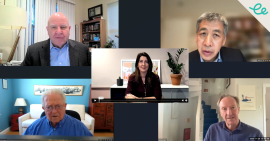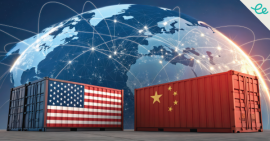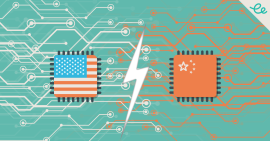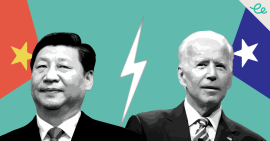Talks to resolve the trade war dominating US China relations took place in Beijing then Washington, and went well enough for President Donald Trump to extend the truce. But after abandoning unsuccessful talks with North Korea, he suggested he could do the same with China: “I am always prepared to walk,” he said. This article is a summary of important US China news in February 2019.
US Trade Rep Robert Lighthizer played down hopes of a quick deal and warned that new problems are likely. One apparent breakthrough: an enforcement mechanism for promised reforms, with punishment if complaints are not resolved, but plenty of experts consider enforcement difficult if not impossible. The structural reforms to economic and trade policies demanded by Washington could take years to enact, warned China’s ambassador.
With the 1 March deadline looming for an end to the truce, and a sharp escalation in US tariffs, Trump said he would extend that deadline and plan to meet his counterpart Xi Jinping to seal the trade deal. “The US has made substantial progress in our trade talks with China on important structural issues including intellectual property protection, technology transfer, agriculture, services, currency, and many other issues,” the President Tweeted.
“As a result of these very productive talks, I will be delaying the US increase in tariffs now scheduled for March 1. Assuming both sides make additional progress, we will be planning a Summit for President Xi and myself, at Mar-a-Lago, to conclude an agreement. A very good weekend for U.S. & China!”
Optimistic signs had followed the trade talks switching from Beijing to DC. Negotiators drafted memorandums of understanding on six structural issues of great concern to all companies and countries doing business with China: forced technology transfer and cyber theft, intellectual property rights, services, currency, agriculture, and non-tariff barriers to trade. Beijing may buy an additional $30bn a year of US agricultural products.
Huawei pleaded not guilty to US charges of trade secrets theft, and its chairman argued the US CLOUD Act was a greater security risk than Chinese telecoms equipment. While a wing of British intelligence concluded Huawei is a manageable risk for 5G operations, and Germany unlikely to ban Huawei equipment outright, Secretary of State Mike Pompeo warned that the US won´t partner or share information with countries that adopt Huawei systems. As other Western nations considered restrictions on Huawei , the firm lashed out at Trump’s “co-ordinated, tactical political campaign”
Xi was set to meet senior US officials after trade talks in Beijing, and Trump sounded conciliatory on pushing back the deadline for imposition of higher tariffs on Chinese imports. The negotiations are like “pulling teeth”, said one source. After many broken promises in the past, US Trade Rep Lighthizer and Treasury Secretary Mnuchin were urged to create an effective enforcement mechanism. A US commander pushed for more funding to counter Beijing’s attempts to “bend, break and replace the existing rules-based international order”.
There’s “a lot of work left to do”, admitted Mnuchin in early February as he headed to Beijing for the third round of trade war talks. In his State of the Union address, Trump insisted any trade deal “must include real, structural change to end unfair trade practices, reduce our chronic trade deficit and protect American jobs.”
The US’ top cyber diplomat warned that allowing Huawei and other Chinese firms into next-generation telecomsnetworks would permit Beijing toexpand its surveillance state globally. Huawei asked suppliers to move some production to China ahead of possible restrictions on access to essential US technology.









Comments are closed.